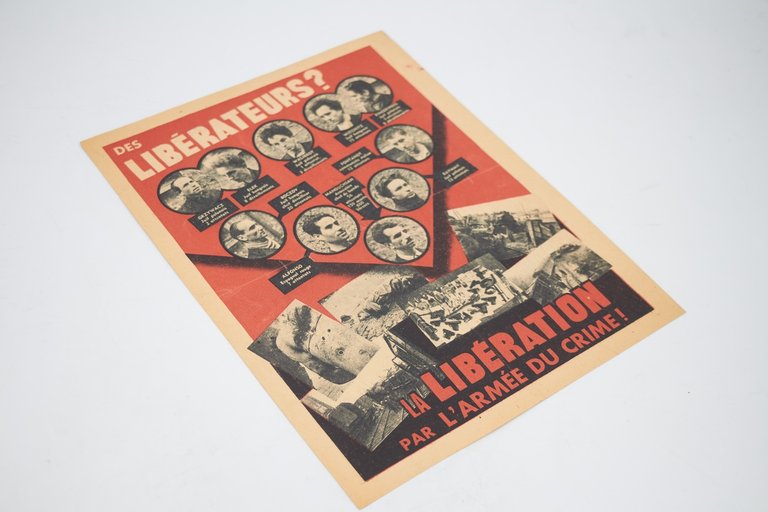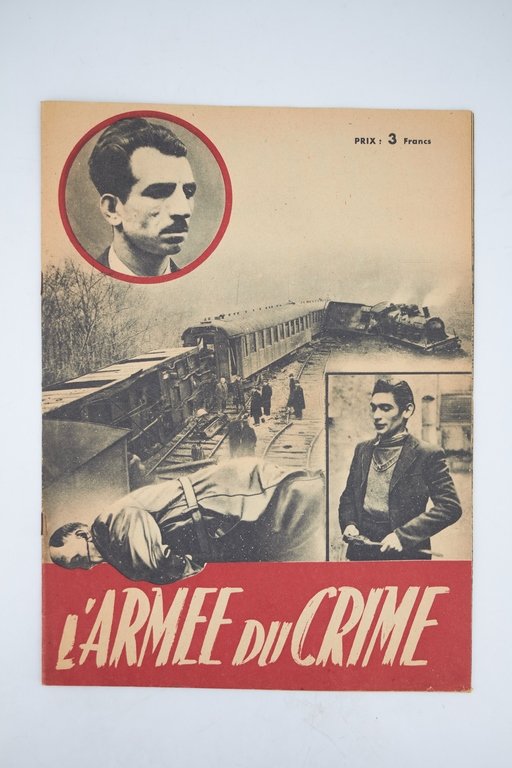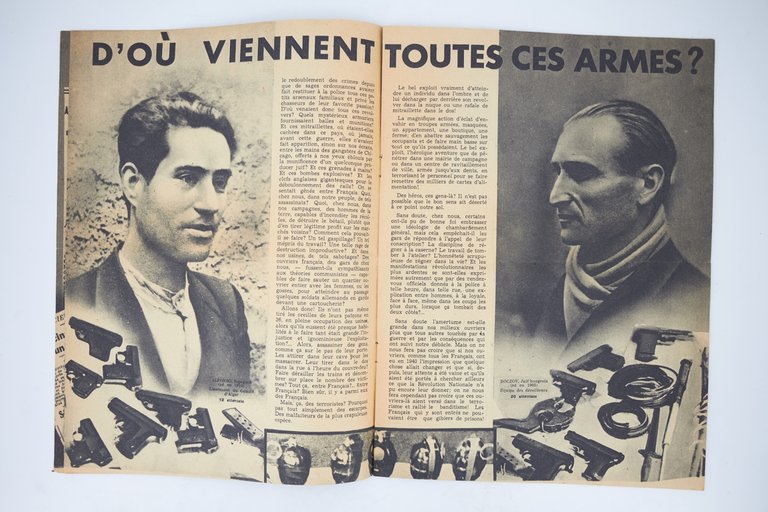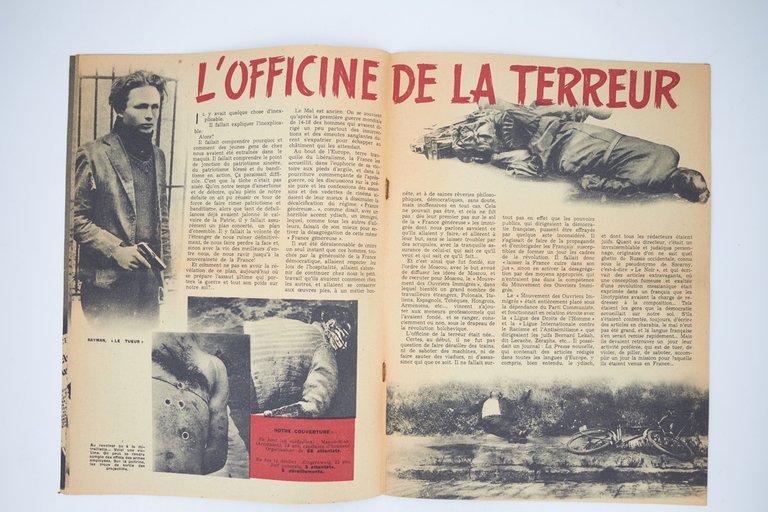- S.n., s.l. 1944, 20,5x26,5cm & 22x30cm, une feuille + une brochure agrafée. - |A Hate Symbol turned into A beacon of resistance| L'Affiche RougeAntisemite and anticommunist propaganda leaflet[with] L'Armée du crime 1944 ? 20,5 x 26,5 cm & 22 x 30 cm ? one leaflet and one brochure Rare example of this propaganda leaflet published by Nazi Occupation Forces, which became the most iconic image of the French Resistance. This smaller version of the famous Affiche rouge features the poster on the recto and a paragraph on the verso castigating "the Army of Crime against France". It opens with accusations against "the global dream of the Jewish conspiracy" and claims "if Frenchmen sabotage, loot, and kill [.] it is always under the influence of Jews". A discreet horizontal crease, otherwise superb condition for an ephemeral document. With the rare brochure entitled "L'Armée du crime" ["The Army of Crime"] in newspaper format illustrated with 14 pages of photographs. A trace of horizontal fold. A fine copy. *** "Over the years, the image of the Affiche rouge has gradually become engraved in the memory of the French. We never tire of looking at it and seeing it again, from time to time, in a newspaper or on television. It evokes the same emotion as listening to Aragon's poem sung by Léo Ferré. This poster possesses a power its creators never anticipated." (Adam Rayski) Through a remarkable reversal of its intended purpose, the Affiche rouge became, upon its appearance on "the walls of our cities", a symbol of the courage, the achievements and international solidarity of Resistance fighters. As wrote Aragon in his famous poem, everything about the poster was designed to "sow fear in the passersby": the color of "the poster, that seemed like a bloodstain", the portraits of Manouchian and his men, "black with beard and night, disheveled and threatening", the strange names that were "hard to pronounce", the tally of each man's "crimes", and the photographic evidence, funneling into a grim procession of gray faces. Yet, when poet Louis Aragon wrote eleven years later "But at time of curfew, wandering fingers / Wrote under your pictures 'Fallen for France'", it was not mere poetic license. As the French national Immigration Museum points out on its website: "It is certain that here and there anonymous hands laid flowers at the foot of these posters or stuck banners on them that read 'Martyrs' or 'Yes, the army of the Resistance'". This is corroborated by the clandestine journal Les Lettres françaises, who published the following month a text also issued in a leaflet distributed by the Mouvement national contre le racisme (National Movement Against Racism), a Resistance organization stemming from the Jewish section of the Main-d'OEuvre Immigrée (Immigrant Labor) led by Adam Rayski: "Very tall and dramatic with its ten medallions on a blood-red background, this is the 'Liberators?' poster, representing 'Jewish terrorists': a Hungarian, a Spaniard, an Armenian, an Italian, and Poles. The crowd gathers silently. Above each of their portraits — meant, no doubt, to horrify us — their exploits are listed. One of them carried out 56 derailments, causing 150 deaths and 600 injuries.'Quite the tally,' someone says.A woman confides to her companion: 'They didn't manage to make them look ugly.'And it was true. Despite beatings, imprisonment, and hunger, the passersby gaze at these energetic faces with their broad foreheads. They look long and solemn, as one salutes fallen friends. In their eyes, there is no morbid curiosity, only admiration and sympathy, as if these men were our own. And indeed, they were ours, for they fought among thousands of us for our homeland, which is also the homeland of liberty. On one of the posters, someone had written at night, in charcoal and capital letters, a single word: martyrs. It was Paris's tribute to those who fought for freedom." This failure of Nazi and collaborationist propa












Scopri come utilizzare
Scopri come utilizzare

